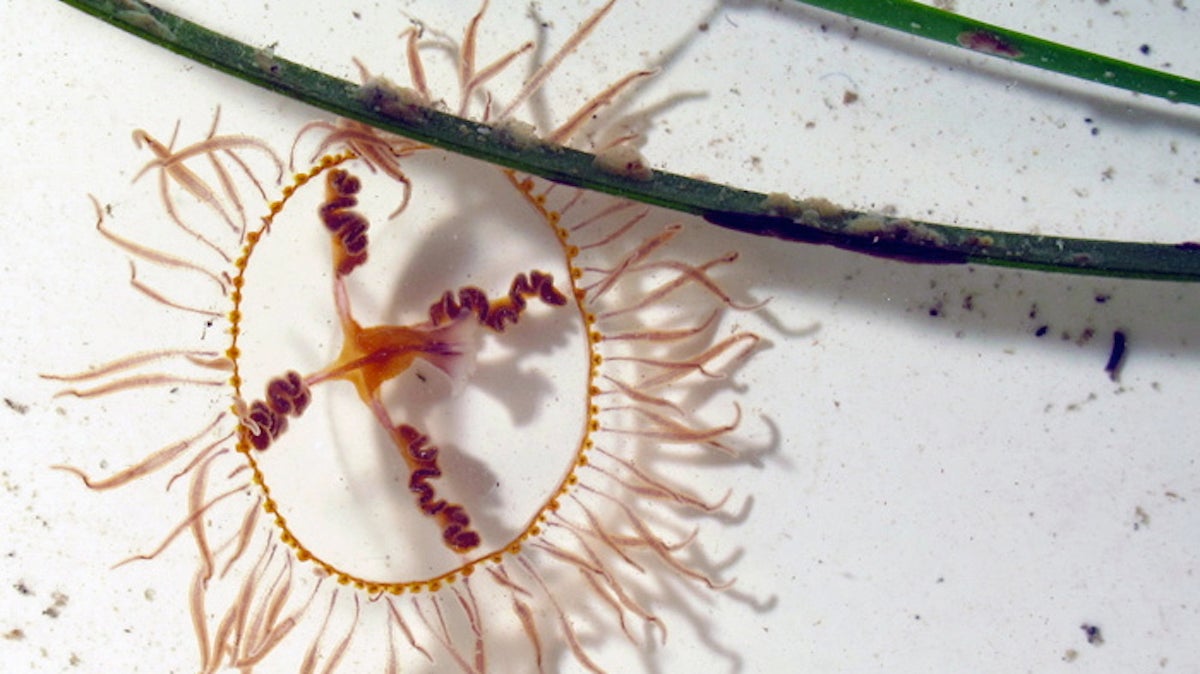New Jersey’s nasty clinging jellyfish are gone for now but not forever

Clinging jellyfish (Dann Blackwood/U.S. Geologoical Survey
A tiny but potent jellyfish is taking up residence in New Jersey.
Spotted locally this summer for the first time, the dime-sized clinging jellyfish, which packs a biting sting capable of causing muscle cramps and hallucinations, is now reproducing in the Shrewsbury River estuary.
Evidence of this was discovered last month by a team of biologists from Montclair State University, including Dr. Jack Gaynor, who says they located a singly polyp, a microscopic tube-like structure located on the seafloor. The polyp is an early step in the jellyfish reproduction cycle.
“There are almost certainly more in that system, and that means these polyps will probably survive the winter, and next year when the water warms up and there is plenty of food and plankton available for feeding, they will produce new clinging jellies.”
That’s bad news for swimmers in the Shrewsbury River, but also for the more-heavily populated Barnegat Bay region, which offers a similar habitat of calm, brackish water with vegetation including eel-grass.
“New Jersey has kind of a lot of habitat that fits the bill for this species,” says Gaynor. “I think that is the one concern, that if it were to migrate to Barnegat Bay, there are lots of places where this jellyfish would feel at home.”
The clinging jelly, officially known as the Gonionemus vertens, used to call only the Pacific Ocean home. But after arriving in the waters off of Woods Hole, Massachusetts more than 100 years ago, the marine animal has made its way down the coast, including sightings in Long Island, Connecticut, and now the Garden State.
WHYY is your source for fact-based, in-depth journalism and information. As a nonprofit organization, we rely on financial support from readers like you. Please give today.

